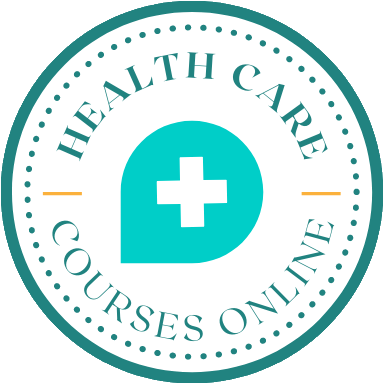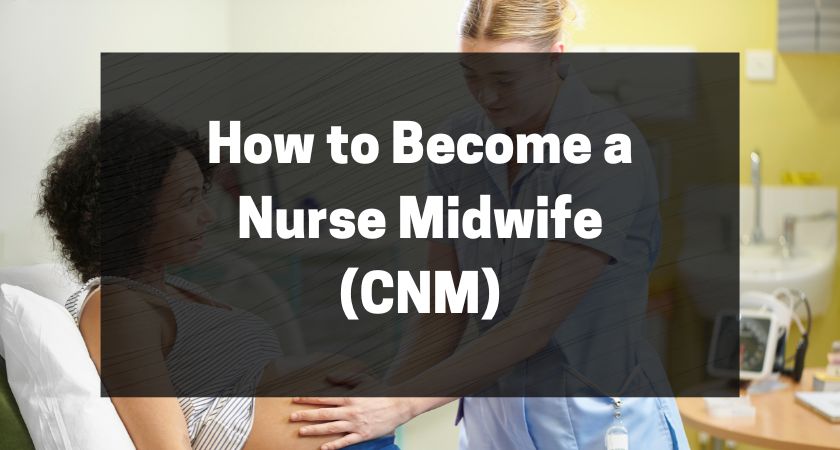You want to become a nurse midwife, but you’re just not sure how to get there, right?
The process seems long and complicated… and you might even wonder if it will all be worth it, in the end.
We don’t blame you!
The process of becoming a nurse midwife can seem overwhelming and confusing, especially because it may differ per state.
There are a lot of requirements and steps to take.
But we’re here to help you out!
We’ve summarized all the crucial parts and processes into 5 simple steps.
We’ll also answer relevant questions such as:
- What’s the difference between a CNM and a CM?
- How much are CNMs paid?
- Which states give the highest salaries to CNMs?
- Which states hire the most CNMs?
- Where do CNMs usually work?
- How long will it take to become a CNM?
As a nurse midwife, there is so much good you can do for women before, during, and after pregnancy, and even in all stages of their lives.
It’s a noble and fulfilling career.
But like every dream worth pursuing, you need focus and determination each step of the way.
Let’s go through each step together.
How to Become a Nurse Midwife (CNM): 5 Simple Steps
Here are the 5 steps to becoming a CNM:
- Become a Registered Nurse (RN) and Gain Experience
- Complete a Master’s or Doctoral Degree
- Take the National Certification Exam (Optional in Some States)
- Apply for Your CNM License
- Keep Your RN and CNM Licenses Active
Step #1: Become a Registered Nurse (RN) and Gain Experience
Nurse midwifery is one type of advanced practice for registered nurses.
But this means that you FIRST need to become a Registered Nurse (RN) before you can pursue nurse-midwifery. You can’t specialize if you don’t have the basics to start with.
If you want to read a full article on how to become an RN, you can read this.
But let’s cover a few of the basics here.
Choose Your RN Program
To become an RN, you need to gain a lot of knowledge and skills.
This is why you need to enroll in an accredited RN program.
You have two choices – an Associate Degree in Nursing (ADN) which takes two years to complete, or a Bachelor of Science in Nursing (BSN) which takes four years to complete.
Although an ADN sounds appealing because it only takes two years, it also has its downsides if you want to pursue nurse-midwifery.
This is because most nurse-midwife programs require a BSN as the minimum education requirement.
But you don’t need to give up if you graduated as an ADN. Some schools offer RN to MSN bridge programs, which try to fill in the gaps in your training.
Get Your RN License
After graduating from your RN program, you can apply as a registered nurse in your state by taking the NCLEX exam. This is called licensure by examination. All aspiring RNs need to pass this exam to become licensed.
If you are already an RN in one state but want to advance as a nurse-midwife in another state, you may also be required to apply for an RN license in the new state you want to practice in. This is called licensure by endorsement.
However, some states are part of a Nursing Compact. This means that RNs registered in a nursing compact state can practice as an RN in another nursing compact state without having to apply by endorsement. Their licenses are considered multi-state licenses.
It’s important to remember that each state will have different requirements for licensure by examination, licensure by endorsement, and multistate licensure. You can check the specific requirements for your state here.
However, there are also some common requirements that almost every state includes, such as:
- the transcript of records from your nursing school
- a criminal background check
- an application fee
- an exam fee (for licensure by examination)
- proof of licensure in another state (for licensure by endorsement)
- proof of a multistate license (if applying in another nursing compact state)
Gain Relevant Nursing Experience
When you become a full-fledged RN, you can start working and gaining experience.
This is an important part of your journey because it gives you real-life experience working as a nurse, which is crucial to more advanced practice.
Use this time to identify which field you are most interested in and whether pursuing advanced studies is something you want to do.
Most nurse-midwife programs will also require at least 1-2 years of work experience before allowing you to enroll.
Step #2: Complete a Master’s or Doctoral Degree
You are now a step closer to becoming a Certified Nurse Midwife.
Nurse midwifery requires a specialized skill set and knowledge base, so you will need to get further training before you can practice as one.
This is why you need to enroll in a Master of Nursing (MSN) degree for nurse-midwifery. This is the minimum education requirement. It will take you about 2 years to complete this as a full-time student.
However, you can also go on to gain a Doctor of Nursing Practice (DNP) in nurse-midwifery. It will take you about 2-3 years to complete this.
Make sure that the graduate program you enroll in is accredited by the Accreditation Commission for Midwifery Education (ACME) and by your state’s board of nursing.
All of these programs will have a didactic portion and a clinical or hands-on portion. You can expect to gain 500 or more hours of real-life experience before graduating.
Step #3: Take the National Certification Exam (Optional in Some States)
For most states, this is the next step after graduating from your MSN or DNP program.
You will need to take the National Certification Exam (CNE) offered by the American Midwifery Certification Board (AMCB).
This exam consists of 175 multiple-choice questions. Each candidate is given 4 hours to finish the exam.
You can read more details about the exam here.
However, becoming nationally certified may be optional in some states. The California BRN, for example, gives three possible methods of application for aspiring CNMs.
But even if it is optional in your state, it may be advantageous for you to still gain national certification because this will increase your credentials.
You will be seen as on par with other CNMs in other states, and it will be easier for you to become a CNM in another state if you decide to transfer.
Step #4: Apply for Your CNM License
If you took the national exam and passed, then you can apply for your CNM license through your state’s board of nursing.
Each state will have specific requirements, but here are some general requirements you may expect to submit:
- A copy of your active RN license
- Transcript of Records from your accredited MSN or DNP school
- Proof of clinical experience from an accredited provider
- Certification from the American Midwifery Certification Board (AMCB) with the expiration date
You will also be expected to pay an application fee.
If you are applying for prescriptive authority, you may or may not need to fill up a separate application form. You will also need to pay an additional fee. You may be required to submit further proof of training in pharmacotherapeutics.
Step #5: Keep Your RN and CNM Licenses Active
In this step, you can already enjoy the fruits of all your hard work.
You can start working as a CNM, and you’ll most likely find a lot of job opportunities out there for you.
But just don’t forget that you need to keep your RN and CNM licenses updated. The nursing field is always advancing, so you need to keep updated.
States need to ensure that you continue to be competent in your field.
Most states require you to renew your licenses every two years and specify the hours of continuing education you need to achieve. But the requirements may differ per state.
If you want to check the continuing education requirements of your state, you can go here.
You can also find a summary of the continuing education requirements of all the states in the table in this article.
If you are nationally certified, then you will also need to keep your AMCB certificate active.
You can do this by completing three Certificate Maintenance Modules approved by the AMCB plus 20 additional units of continuing education within a 5-year cycle. Another option is by taking a reexamination within the 4th to 5th years of each 5-year cycle.
Frequently Asked Questions about Becoming a Nurse Midwife (CNM)
Now that you know how to become a nurse midwife, you may still have a few questions that you want to be answered.
Here, we will try to answer the most common and relevant ones.
What’s the difference between a CNM and a CM?
CNM stands for Certified Nurse Midwife and CM stands for Certified Midwife.
These two are very similar in terms of the end result – their job description and qualifications. They only differ in how they get to the end.
CNMs are registered nurses who specialize in nurse-midwifery. CMs come from other healthcare professions aside from nursing.
Both, however, need to take a master’s as a minimum requirement, and both need to take the same national certification exam offered by the AMCB.
How much are CNMs paid?
According to the BLS, the mean hourly wage of nurse midwives is $54.91. This translates to a mean annual wage of $114,210.
Which states give the highest salaries to CNMs?
The top-paying states for nurse midwives are West Virginia, Utah, California, Massachusetts, and New York.
You can use the table below from the Bureau of Labor Statistics to see the annual mean wage for each state.

Which states hire the most CNMs?
The states that hire the most nurse midwives are California, New York, Texas, Pennsylvania, and Massachusetts.
Again, you can find this table on the BLS website.

Where do CNMs usually work?
According to the BLS, CNMs tend to work in offices of physicians, general medical and surgical hospitals, outpatient care centers, offices of other health practitioners, and other local government offices.

How long will it take to become a CNM?
This depends on you, primarily… your pace, whether you will go full-time or part-time, how many years of experience you want to take before taking a master’s, etc.
In general, however, it may take you about 6-8 years with a master’s degree and about 8-10 years with a doctorate.
For your reference, you can break it down to:
- Completing your BSN: 4 years
- Taking the NCLEX and gaining clinical experience: 1-2 years
- Taking an MSN: 2 years
- Taking a DNP: 2-3 years
Conclusion
Voila! There you have it!
We’ve completed all you need to know about how to become a nurse midwife, and we’ve answered relevant questions, as well.
We saw that the process may be long and tedious, but so is everything worth pursuing.
Just take it slow and enjoy each step of the way.
We hope you found this article helpful and that it will serve as a guide for your journey.
If you have any more questions or comments, kindly leave us a message!

